#Pyramide Distribution
Explore tagged Tumblr posts
Text
so: masking: good, unequivocally. please mask and please educate others on why they should mask to make the world safer for immune compromised people to participate in.
however: masking is not my policy focus and it shouldn't be yours, either. masking is a very good mitigation against droplet-born illnesses and a slightly less effective (but still very good) mitigation against airborne illnesses, but its place in the pyramid of mitigation demands is pretty low, for several reasons:
it's an individual mitigation, not a systemic one. the best mitigations to make public life more accessible affect everyone without distributing the majority of the effort among individuals (who may not be able to comply, may not have access to education on how to comply, or may be actively malicious).
it's a post-hoc mitigation, or to put it another way, it's a band-aid over the underlying problem. even if it was possible to enforce, universal masking still wouldn't address the underlying problem that it is dangerous for sick people and immune compromised people to be in the same public locations to begin with. this is a solvable problem! we have created the societal conditions for this problem!
here are my policy focuses:
upgraded air filtration and ventilation systems for all public buildings. appropriate ventilation should be just as bog-standard as appropriately clean running water. an indoor venue without a ventilation system capable of performing 5 complete air changes per hour should be like encountering a public restroom without any sinks or hand sanitizer stations whatsoever.
enforced paid sick leave for all employees until 3-5 days without symptoms. the vast majority of respiratory and food-borne illnesses circulate through industry sectors where employees come into work while experiencing symptoms. a taco bell worker should never be making food while experiencing strep throat symptoms, even without a strep diagnosis.
enforced virtual schooling options for sick students. the other vast majority of respiratory and food-borne illnesses circulate through schools. the proximity of so many kids and teenagers together indoors (with little to no proper ventilation and high levels of physical activity) means that if even one person comes to school sick, hundreds will be infected in the following few days. those students will most likely infect their parents as well. allowing students to complete all readings and coursework through sites like blackboard or compass while sick will cut down massively on disease transmission.
accessible testing for everyone. not just for COVID; if there's a test for any contagious illness capable of being performed outside of lab conditions, there should be a regulated option for performing that test at home (similar to COVID rapid tests). if a test can only be performed under lab conditions, there should be a government-subsidized program to provide free of charge testing to anyone who needs it, through urgent cares and pharmacies.
the last thing to note is that these things stack; upgraded ventilation systems in all public buildings mean that students and employees get sick less often to begin with, making it less burdensome for students and employees to be absent due to sickness, and making it more likely that sick individuals will choose to stay home themselves (since it's not so costly for them).
masking is great! keep masking! please use masking as a rhetorical "this is what we can do as individuals to make public life safer while we're pushing for drastic policy changes," and don't get complacent in either direction--don't assume that masking is all you need to do or an acceptable forever-solution, and equally, don't fall prey to thinking that pushing for policy change "makes up" for not masking in public. it's not a game with scores and sides; masking is a material thing you can do to help the individual people you interact with one by one, and policy changes are what's going to make the entirety of public life safer for all immune compromised people.
#dyspunktional#cripple punk#actually disabled#cripplepunk#a lot of these are major concessions for me personally as i'm an anarchist and loathe to support further concentrations of state power#but if you're gonna be operating within the structure of the system. here you go. handing you a cheat sheet for what you should demand.
13K notes
·
View notes
Note
Does every single european country benefit from imperialism? Even a country like ireland?
Yes, to varying degrees. Ireland specifically is a good example because despite being fully integrated in the EU and being the fiscal headquarters of many companies like Google, it is perceived as still being an oppressed nation. In part because of the confusions created around the national question in certain European countries by the third international in its VI Congress, and partly because a large portion of "leftists" don't bother actually analyzing the current state of imperialist relations, its past as a colony of the UK has given it a good reputation to this day.
The EU is nothing more and nothing less than an organism for coordinating the imperialists of Europe and for making a more efficient use and distribution of imperialist spoils. It is not in NATO but it still has a close relationship of cooperation with it. What the UK and French monopolies get out of mining in the Congo, Ireland and the rest of the EU take part in, more or less directly.
The strongest argument could be made about the Balkans, which have a more peripheral situation wrt the EU and NATO. The monopolies of minor powers such as Austria and Sweden often carry out operations in these countries with a lot of similarities to, say, Sub-Saharan Africa, and within the EU these countries have been a stable source of a cheap workforce for decades, such as Romanians in Spain. To some extent, though, they do still recieve some benefit. The relations within the higher strata of the imperialist pyramid might be at times very unequal and predatory, but it's still the imperialist pyramid. Similarly to how minorities of the imperial core still are beneficiaries of imperialism in some form or another.
281 notes
·
View notes
Text
Things Found On The SOLDIER Bulletin Board Before It Got Banned
Also known among the operatives as "Exhibit A in HR's Case Against Us" and "Why Lazard drinks"
• An old timey style wanted poster of Sephiroth.
• A Shinra Crypto Pyramid Scheme Recruitment Poster: "Get rich! Ask me how!" flyer definitely not put up by Genesis.
• A candid, casual shot of Angeal in a towel, with a sticky note on it that reads "This man's physique is impeccable and we should all strive to look like him - Kunsel"
• An unofficial and deeply Inappropriate SOLDIER length ranking. A full infographic-style chart titled "Who's Really First Class?" — featuring stylized silhouettes, pixelated measurements, very unscientific bar graphs, with one bar labeled "??? (Sephiroth)" that pierced through the top of the page and kept going onto the wall behind.
• A heavily redacted mission report re-titled "How To Get Bitches In Wall Market" By Roche. Accompanied by a pinned photo of Roche, Zack, Kunsel and Cloud in front of the Honeybee Inn doing a thumbs up. Entire paragraphs blacked out with Sharpie by Lazard.
• A sign reading: "STOP SCREAMING IN THE AIR DUCTS." Below it: a list of times screams were heard, organized by pitch. "3:12 AM – Zack: "YOU'LL NEVER CATCH ME ALIVE," 4:47 AM – Genesis: operatic shriek followed by "What an ADORABLE rat!",, "2:16 PM – Kunsel: 🎶 Vent mann, he's in the vents 🎶 Who's gonna tell 'im he can't be in the vents? 🎶
• A complaint letter written entirely in Wingdings. No one could decipher what it said, but Sephiroth pinned it dead center with his sword and left it there for a week. Genesis claimed it translated to "STOP LEAVING RAW EGGS IN THE SHOWERS. THE HOT WATER IS COOKING THEM."
• "Kunsel Knows" Weekly Gossip Column. Typed, laminated, and mysteriously accurate. This week's headline: "Rufus and Tseng: Covert Lovers?" Kunsel denies authorship every time while distributing fresh copies.
• A photo labeled "Sephiroth, age 6." Except it was clearly taken recently. Featured a photo of Sephiroth happily filling a coloring page while eating animal crackers.
• A prayer candle with Lazard's face on it nailed to the bulletin board. Taped under the header: "Our Administrative Savior, Deliver Us From Overtime." Lit regularly by Angeal. Burned through the wall once. No one confessed.
• "Sign Up for the Shirtless Sparring Tournament!" flyer sponsored unofficially by Zack. Angeal's name was written 42 times all in different handwriting by different people. Among them was noticeably Sephiroth's handwriting 12 times.
• An updated Lost and Found photo collage of strange things retrieved from the training room. Notable entries included: A weaponized tree branch with "property of Sephiroth" carved into it, an Angeal body pillow, a molotov cocktail, a Genesis-themed rubber duck, Cloud Strife looking confused, and a suspicious flashlight.
• A flyer titled: "Genesis Says He Can Fly Now, Come Watch at Noon"
• A very official-looking memo from HR titled "You Are Not Allowed To Challenge Sephiroth To Arm Wrestling, Ever Again."
• A letter addressed to Lazard written entirely in glitter pen that read only: "You can't fire us all. ❤️"
• A laminated page titled "Forbidden Moves Banned From Sparring" Included: A photo of Sephiroth and Genesis beating each other with makeshift marker swords.
• Two photos pinned side by side: one of Sephiroth and the other of ex-turk Vincent Valentine. People would gather around while Kunsel divulged his theories using a presentation pointer stick.
#ff7#ffvii#final fantasy 7#sephiroth#final fantasy vii#ff7r#cloud strife#zack fair#angeal hewley#genesis rhapsodos#kunsel#crisis core
183 notes
·
View notes
Photo

The 4200 years old Obelisk of Maništušu is attributed to the Akkadian culture and was originally erected in Mesopotamia before being taken to Susa, Iran, as war booty by the Elamite king Šutruk-Nahhunte. It is made of diorite and features a four-sided pyramidal form with a high-quality cuneiform inscription in Akkadian, documenting large royal land purchases and the distribution of estates to officers. It measures 140 x 60 x 60 cm. Louvre Museum
41 notes
·
View notes
Text
Taller Nepantla: "So where do art and artists stand within this new techno-feudal political landscape?"
1) Artists don’t own anything.
We don’t own the studios. We don’t own the galleries. We don’t own the production of materials. We don’t own the newspapers. We don’t own the art schools and universities. We don’t own the mechanisms of art distribution. We don’t own our work. We don’t even own our own art. Artists have no labor protections and are content to work individually to perpetuate their own myth or pray to the sacred algorithm to go viral. By being atomized we are exactly like a feudal peasant of the Middle Ages, who lives in extreme precariousness giving away part of his crops to his local king. The art world, its industry, its weight, its impact, its trend, everything belongs to other people. Did you know 80% of the art-market is own by a small group of Mega Collectors? Those who control the means of artistic production control the artists.
2) By not owning anything, artists and cultural workers only rent.
We no longer sell handmade works, but instead we sell our hands for work. More and more the creative and artistic sector sells services rather than art. Artists need multiple jobs in order to invest in their art practice. Even more, just as in the feudal stage of history, we work the land in a territory that does not belong to us, the land belongs to the landowner. In this land artists will always pay rent, a tax, to the feudal lord. We use GOOGLE to send emails We upload our art to INSTAGRAM We educate ourselves through YOUTUBE We communicate through TIKTOK We pay to use ADOBE SUIT We buy materials through AMAZON We move through UBER We send files through WETRANSFER Every time we use these platforms, we generate money for the feudal lords.
The art world depends on these platforms, which collect our information and our data, to sell.
When a service is free, our attention is the product. That is, it is impossible for an artist to establish himself as an artist without generating money for the landowners who own the technological platforms. That is, the art world depends on these products. It is impossible to be an artist without using these technologies. Techno-feudalism keeps artists in a situation of -permanent-precariousness dependence on technological platforms. Just like in medieval times, peasants live off the crumbs offered by the crown, living in a house, working on land, and eating food that does not belong to them. Technocapitalists don’t want artists to own the means of artistic reproduction. Technocapitalist instead build a world where everything is rented. Every stage of artistic production from how you imagine an artwork, how you study an artwork, how you draft and artwork, how you build an artwork, how you show an artwork, how you distribute an artwork, how you perceive an artwork, and how you think about an artwork, is all determined by apps and tools which you rented from a tech corporation.
3) Artists SUBSIDIZE the profits of technological platforms.
That is, we pay an inflated price for these services directly from our pockets. The art world depends on the underpaid work of our services. If there were fair wages in the art world, then the entire pyramid wuld be destroyed precisely because it depends on the fact that most artists do not earn a fair wage. All the art we produce and share is being used to train algorithms to better sell us products. When a platform is free, like Facebook, Twitter, Instagram, Tumblr, we are the product that is sold. Even more, artists subsidize the entire artworld. We work for free. We work for low wages. We work for exposure. We are the “volunteer army” Jerry Saltz brags about. The artworld benefits from not paying us what we deserve.
4) The entire art world depends on the platforms of the Clouds.
All museums, galleries, fairs, biennials, and auctions depend on the technological infrastructure dominated by feudal landowners. In other words, there is a dependence on these technologies in order to promise an interconnected, cosmopolitan, and immediate “art world.” The feudal landowners who own the technological platforms, having no competition, can impose whatever price they want, and the art world must obey. They can raise prices without losing customers. The price we pay to use TechnoCapitalist services is completely arbitrary. It does not correspond with the quality of the service but rather to the whims of the landlords. One day, black ink for printing is free, the next day it costs $5.99 a month as a part of a subscription package. We are looking at you Anish Kapoor.
5) The algorithm decides what counts as talent as long as it can generate profits.
Algorithms are increasingly deciding what counts as “value.” Major collectors will be able to systematize the works on the market in order to deduce, through algorithms, the value of a work and whether it is a good investment. The algorithm has more power than art critics and art historians. An artist will then adapt to the algorithmic trends of his time, in order to go viral. A work of art that goes viral can change the artist’s life. NFT’s are just one example of techno-feudal experiments in the arts. NFT’s promise decentralization and transparency, but end up replicating the worst aspects of capitalism, feudalism, and what new technologies can do.
In short, the art world is interconnected with techno-feudalism. We artists are technologically and socially dependent on a system that exploits us. It is important to increase media literacy so that artists can build alternative technological systems to cut dependence on monopolistic companies. A king’s mindset is always to grown and conquer. In the end, the artworld’s investment in techno-feudalism will actively bring the destruction of other smaller artworlds in the global south. Techno-feudalism will produce a homogenized, sanitized, apolitical universal art, that privileges creations that protect the artworlds overlords."
83 notes
·
View notes
Text
witchlings who hide from apprenticeship for as long as possible because the covens that were once communities are now pyramid schemes. because the witches who rule their worlds aren't the chosen conduits of magical essence they are, but rather the other ones, the empty vessels, who realised -- centuries ago -- that to be a conduit isn't to be powerful. it's to be a resource.
up and up that essence is siphoned. middle-witches who slipped in before it all stagnated, hunting those with potential, turning those without into the dolls that will catch more -- lest they're turned into one too. pipeline managers for endlessly accumulated fuel. all for a gerontocratic elite that never stopped the arms race that got them here, because the only thing they fear more than each other is one little witchling slipping through their grasp to find one last unhoarded, unburned tome and learning enough to challenge them.
but you didn't -- did you little witchling? you tried. i'll give you that. but it only showed how much of you there is to consume. you're lucky, you shan't be squandered and distributed to the squabbling runts. you'll remain right here, the weight of chains softened on pillows. perhaps you'll even find something between your legs, on your lips, from time to time. it's all mine to take, and i will take it. do you feel those chains working now? weakness is but a first symptom, the disorientation will come next. i look forward to the devotion, and can only hope you'll last a few decades longer than the last one did.
74 notes
·
View notes
Text
The Anatomical Off-Switch: Occipital Bone Vulnerability and the Ethics of Precision - Adam Lanza Pose
What happens when anatomical ignorance replaces precision in life-or-death situations? In areas that rely on the weaknesses of the human body — military, forensic, or medical — the difference between accurate comprehension and rough estimate can be success or catastrophic failure. One of the most critical subjects in our discussion is the human skull, and more specifically, the anatomical composition of the occipital bone. Techniques such as the so-called 'Adam's pose', which are founded on incapacitating certain parts of the cranium in a rush, presume a level of anatomical proficiency that is often underestimated. The implications are huge: a misunderstanding of human skull anatomy, particularly the location and vulnerability of the brainstem, can render such techniques useless or even fatal in unforeseen ways. This essay explores why anatomical accuracy, especially regarding the occipital bone and recumbent brainstem below, is not just important but mandatory.
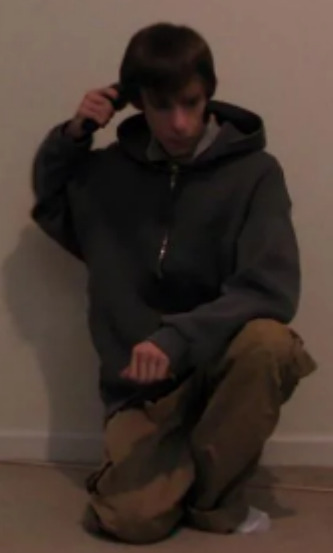
Anatomy of the Skull: The Occipital Bone and Brainstem Vulnerability
The human skull, far from a passive covering for the encephalon, is an elaborately engineered architectural triumph. Its form — a mosaic of varying bone thickness, density, and morphological complexity — testifies to evolutionary precedence for protection being given to neural structures of different criticality. Of its component parts, pride of place — both anatomical and functional — goes to the occipital bone. Situated at the posteroinferior aspect of the skull, this trapezoidal bone not only forms the posterior cranial fossa but also encircles the foramen magnum, the vital opening through which the brainstem continues as the spinal cord. It is here, within this osseous crossroads, that the medulla oblongata — the cylindrical tract of autonomic and somatic neural pathways — finds its residence. The anatomical hardness of the occipital bone and the physiological criticalness of the medulla make this region a focal point for understanding the intersection of neuroanatomy and clinical vulnerability.
The occipital bone consists of four components: the squamous portion, two lateral condylar portions, and the basiocciput. Its squamous portion, while being in its external cortical layer robust, is internally thinned to accommodate the cerebellar hemispheres, while the basiocciput — a thick load-bearing plate — anchors the skull to the vertebral column via the occipital condyles. Critically, the bone density alters to balance cranial integrity and weight distribution; histological sectioning shows a gradient from compact cortical bone peripherally to cancellous trabeculae in the area of the foramen magnum. This architectural compromise nevertheless creates a biomechanical paradox: while the occipital bone is extremely effective at dispersing posteriorly applied forces, its shaping around the brainstem allows that in trauma scenarios it forms a locus minoris resistentiae (a point of least resistance).
To appreciate the dangers of occipital exposure, one must first decipher the function of the medulla as the most caudally situated segment of the brainstem. Often referred to as a biologic metronome, the medulla houses nuclei with cardiorespiratory autoregulatory functions — the dorsal respiratory group, the nucleus ambiguus, and the solitary tract nucleus — that together furnish involuntary respiration, vasomotor tone, and reflex functions such as coughing and swallowing. The pyramids contain corticospinal tracts for voluntary motor function, and the inferior olivary nuclei convey cerebellar communication. Perhaps most importantly, the medulla also integrates sensory information from cranial nerves IX (glossopharyngeal), X (vagus), and XII (hypoglossal), rendering it a foundation of both autonomic viability and somatic integrity.
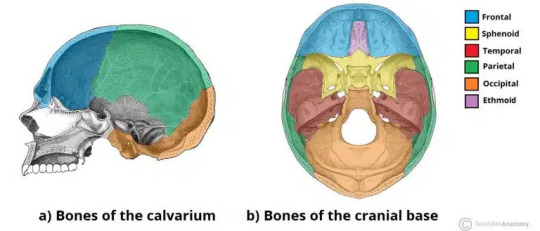
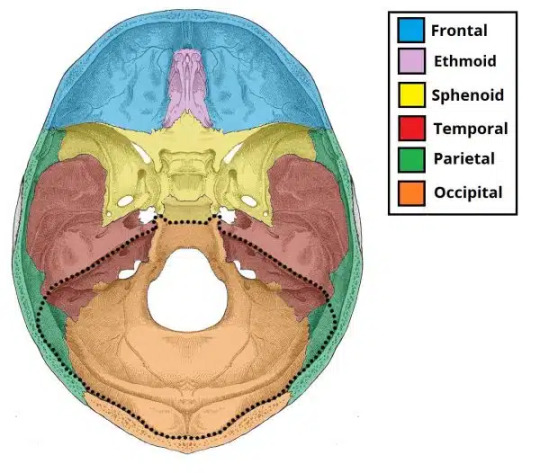
Vulnerability and the 'Off-Switch' Phenomenon
Encasement of the medulla in the foramen magnum of the occipital bone — an architecture formed for spinal cord continuity, rather than impact protection — subjects it to catastrophic damage in trauma. Clinical case series of occipital impact (e.g., falls, blunt trauma) exhibit the same: Forces transmied via the thin squamous occipital bone or condylar regions result in medullary compression or shear injury, and a sudden cessation of autonomic functions. This syndrome, colloquially known as the 'off-switch' effect, manifests in the guise of acute apnea, bradycardia progressing to asystole, and loss of consciousness — an incompatible triad with ongoing life.
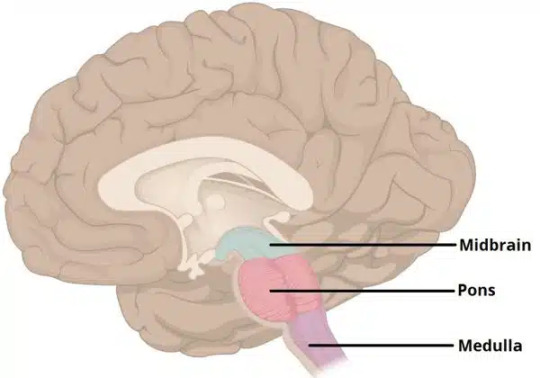
The biomechanics of such susceptibility are based upon fixed position of the medulla. Unlike the cerebral hemispheres, which are supported by cerebrospinal fluid buoyancy and septations of dura, the brainstem is supported by cranial nerve roots and denticulate ligaments that limit the brainstem's capacity to be displaced. Consequently, even minor osseous deformation — say, a basilar skull fracture extending into the clivus — may compress the ventral surface of the medulla, destroying the reticular activating system (RAS). The RAS, which controls wakefulness, is not functionally redundant; its permanent destruction results in coma or brainstem death, with the occipital region's fatal sensitivity.
This anatomical weakness has implications of great scope across specialities from trauma surgery to biomechanical engineering. In acute medicine, the 'occipital priority' guideline places prime importance on rapid stabilisation of neck and head to prevent secondary medullary damage — a practise validated by decreases in mortality in cases of atlanto-occipital dislocation. Neurosurgeons are confronted with moral complexities in managing irreversible brainstem damage, as medullary destruction always is subject to the determination of death under jurisdiction employing neurological criteria.
Furthermore, the vulnerability of the occipital bone has influenced protective technology. Modern helmet designs, for instance, prefer occipital reinforcement with multi-layered composites as a response to histological data that subjected the bone to comminuted fractures. Car headrests also aim to reduce hyperextension forces that can indirectly crush the foramen magnum.
Functional vs. Non-Functional Damage: Why Targeting Maers
The success of cranial interventions — clinical, tactical, or historical — depends on a fundamental anatomical fact: Neurological criticality is not uniformly distributed. The popular fallacy is that structural salience translates to functional necessity. The parietal and temporal bones, for instance, enclose the cerebrum, the locus of higher thought, sensory integration, and voluntary motor function. While injury to these regions may introduce dramatic clinical presentation — subdural haematomas, focal seizures, or aphasia — such injuries typically permit temporary survival due to bilateral organisation and functional redundancy of the cerebrum. A gunshot wound to the temporal lobe, even if potentially fatal secondary to secondary swelling or haemorrhage, may permit brainstem nuclei to be preserved, with intact autonomic function for a few minutes or hours. This creates a perilous scenario in tactical or defence contexts: an adversary with such injuries may still possess sufficient motor coordination to retaliate despite extensive cortical damage.
The target zone of the occipital bone, however, is a functional singularity. A projectile or impact force through this region risks direct injury to the medulla oblongata, which lacks the redundancy of the cerebrum. Neurophysiological shutdown in this location is not a gradual decline but an instantaneous failure of homeostatic control — an effect known as autonomic decoupling. Traditional histories of balefields, such as the correct coup de grâce techniques employed by medieval executioners targeting the occiput, or Roman gladius thrusts in the nape of the helmet, inherently accepted this dichotomy. Modern ballistic studies verify the same: kinetic energy transfer to the brainstem results in immediate loss of posture (through interference with vestibulospinal tracts) and quieting of the reticular activating system, rendering sensory-motor incapacitation absolute.
This dualism has both pragmatic and ethical dimensions. In police work, for example, reliance on parietal or temporal shots to neutralise threats offers non-lethal possibilities, leading to the potential escalation of interactions. Precise targeting of the occipital region — even though biomechanically perfect — is laden with humanitarian implications by virtue of being irreversible. Forensic pathology also makes this dichotomy more apparent: cerebral lacerations dominate homicide reports, whereas brainstem injuries are disproportionately linked to judicial or military interventions where instant lethality is maximised. The functional-non-functional distinction thus transcends anatomy, aligning with legal codes, combat ethics, and even the evolution of less-lethal technology.
Bone Structure and Ballistic Challenges: The Science of Penetration
The skull's heterogeneous structure — an admixture of dense cortical plates and spongy diploë — presents a dynamic challenge to penetrating energy. Terminal ballistics, projectile behaviour on impact, illustrates gross differences in cranial vulnerability. The 2–4 mm thick on average squamous portion of the occipital bone is very different from the 10–12 mm solid, labyrinthine petrous temporal bone. This difference is due to evolutionary demands: the petrous bone guards the cochlea and vestibular apparatus, which requires rock density, while the occipital region compromises between biped balance weight distribution and defence.
In ballistic situations, these fluctuations dictate outcomes. A 9mm parabellum bullet striking the petrous temporal bone at 90° can yaw or fragment due to the oblique slope and density gradient of the bone, truncating the depth of penetration. High-speed imaging studies demonstrate that rounds dissipate up to 60% kinetic energy on petrous fragmentation while preserving the middle cranial fossa integrity. Conversely, the occipital bone's relative thinness and perpendicular alignment to standard trajectories (e.g., rear-entry wounds) permit greater penetration. Military autopsy reports illustrate that 5.56×45mm NATO rounds impacting the occipital squama produce medulla oblongata penetration in 93% of cases versus 22% for temporal impacts — a disparity amplified by the occipital's proximity to the brainstem.

These principles hold outside the realm of ballistics. Occipital craniotomies in neurosurgery require precise burr hole placement to avoid dural sinuses, and temporal approaches require diamond-tipped drills to penetrate the petrous ridge. Even non-penetrating trauma follows this logic: occipital contrecoup injury from frontal impacts tends to crush the brainstem against the margin of the foramen magnum, whereas temporal impacts transfer energy through the zygomatic arch.
The implications for armour are profound. Modern combat helmets, such as the US Army's IHPS, employ occipital extension plates to counteract this deficiency. Vehicle ballistic glass, on the other hand, is angled to deflect rear-projectiles away from the Achilles' heel of the head. Nevertheless, material science is confronted with a paradox: More occipital armour risks compromising cervical mobility, reinforcing the age-old balancing act between protection and functionality.
Real-World Applications: Tactical, Historical, and Ethical Implications
The anatomical susceptibility of the occipital region and its shielding of the brainstem reverberate across fields, necessitating interdisciplinary analysis. In tactical environments, doctrinal overemphasis on the 'T-zone' (nasofrontal junction and orbits) or occipital targeting is commonly transmogrified into rote memorisation, divorcing technique from pathophysiological logic. Modern combat training manuals, such as the Close Quarter Combat Handbook of the British Army, encourage occipital shots in hostage rescue scenarios in order to minimise collateral risk — an approach grounded in the brainstem's 'neurological boleneck' status. Stress degradation of fine motor skills under most conditions makes operatives resort to less anatomically precise methods, such as centre-mass fire at high rate. Simulation work by Defence Science and Technology Laboratory (DSTL) discovers that only 34% of bullets that were shot in simulated states of stress actually struck targeted cranial targets, illustrating the disconnect between kinetic practise and theoretical training.
In the past, brainstem targeting fatality was exploited long before neuroanatomical maps existed. The misericorde, a medieval dagger that was employed to provide mercy strokes through the occiput, utilised the foramen magnum's exposure in combat with armour. Similarly, Edo-era Japanese kaishakunin (executioners) perfected seppuku techniques based on decapitation strikes aimed at severing the medulla, assuring instant death. These methods, though brutal, are an empirical understanding of functional neuroanatomy — a knowledge subsequently codified in 19th-century codes duello, where pistol shot to the back of the head was an honourable kill blow.
Forensically, cortical versus brainstem trauma is of enormous legal importance. A parietal gunshot wound may permit 30–90 seconds of agonal respiration, during which a victim could theoretically manipulate a crime scene or trigger defencive mechanisms. Occipital trauma leaves no such doubt: suppression of RAS activity excludes all volitional activity. This distinction has influenced criminal jurisprudence, specifically in R v. Dawes (2013), where the Court of Appeal overturned a murder conviction after forensic pathologists determined that the occipital wound to the victim could not immediately incapacitate, undermining the prosecution timeline.
Ethically, the brainstem's role as a biological kill-switch raises an accounting with the moral meaning of anatomical information. Bioethicists such as John Harris have equated medullary targeting with 'neurological euthanasia' — a mechanisation of death that bypasses higher consciousness, reducing human agency to a series of interruptible circuits. This model renders it hard to debate assisted dying, where medullary destruction could theoretically offer painless exits but could make anatomical precision normal as a tool of dehumanisation. The 2016 Lancet Commission report on Brain Death provocatively argued that irreversible brainstem damage would suffice for legal pronouncements of death, a stance opposed by disability groups who argue it undermines the sanctity of cortical personhood.
Conclusion
The Necessity of Knowing Where to Aim
To gamble on the weaknesses of the occipital bone without knowledge of its neuroanatomical stakes is to wield a blindfolded knife. The region's lethality is not merely a maer of bone density or ballistic convenience but of its evolutionary role as the final arbiter of autonomic survival. To this end, the injunction to 'know where to aim' functions outside tactical expedience — it is a metonym for the ethical burdens implicit within scientific mastery.
The vulnerability of the brainstem presents a double accounting: with the limits of human endurance and the hubris of those who would militarise its weaknesses. As the neurotechnologies spread — from directed-energy weapons systems capable of deploying non-penetrative disruption of the brainstem to AI-targeting systems — the boundary between precision and predation collapses. The 2021 UN Report on Lethal Autonomous Weapons Systems actively singled out medulla-targeting algorithms as morally troublesome, warning that 'automating the off-switch of consciousness risks divorcing lethality from accountability.'
However, this knowledge also carries redemptive possibilities. In neurosurgery, occipital craniectomies for the decompression of brainstem compression following trauma illustrate how anatomical accuracy can preserve life instead of ending it. Likewise, the development of non-invasive brainstem stimulation provides promise for conditions such as central sleep apnoea — a reflection of the double-edged nature of scientific advancement.
Lastly, the lesson of the occipital bone is a lesson of paradox: that the origin of life's most vital rhythms is both safeguarded and imperilled by a few millimetres of bone. To learn it is to balance on the razor's edge between biological imperative and existential danger — a borderland where knowledge does not merely empower but demands wisdom. As surgeon-philosopher Sherwin Nuland describes it, 'To master the body's machinery is to hold the threads of life and death; pull one, and the tapestry unravels.' Ignorance here is not merely dangerous — it is a failure of the duty to wield such power with reverence.
_
Verified Sources with Hyperlinks:
Occipital Bone Anatomy NCBI Bookshelf: [Anatomy, Head and Neck, Occipital Bone] (www.ncbi.nlm.nih.gov/books/NBK541093/)
Skull Base Biomechanics TeachMeAnatomy: [Bones of the Skull] (teachmeanatomy.info/head/osteology/skull/)
Forensic Neuroanatomy LHSC Trauma Centre: [Basal Skull Fractures] (www.lhsc.on.ca/critical-care-trauma-centre/basal-skull-fractures)
Surgical Anatomy ScienceDirect: [Occipital Bone Overview (www.sciencedirect.com/topics/neuroscience/occipital-bone)
#teeceecee#tccblr#true cringe community#tc community#tcc tumblr#true crume#adam tcc#smiggles#lanzaposting#Medicine
39 notes
·
View notes
Text
[“Many years ago when the Channel Tunnel—connecting England and France—was being built (1986–1992), I got the chance to talk to a nurse working on the project on the English side. The project was big, deadlines were tight, and the workers, she told me, were suffering terrible conditions in the tunnel (a total of ten workers died during the construction (Smith 2015)). I wondered how complicated her job was as part of the onsite health personnel for such a large project. Not very. “The men mostly come to me complaining of terrible headaches,” she explained, “my job is to give them two aspirin and get them back down the tunnel as quickly as possible.”
Speaking of medicine under capitalism, Waitzkin (2000: 37) notes the fundamental contradiction between the perception of health as the ultimate “caring profession” and a society which establishes obstacles to the goal of alleviating “needless suffering and death,” for “[t]he social organization of medicine also fosters patterns of oppression that are antithetical to medicine’s more humane purposes. These patterns within medicine mirror and reproduce oppressive features of the wider society as well.”
Marxist scholars of medicine have theorised this replication of the wider class struggle within the health system in a number of ways. First, the priorities of the institution favour those of capitalism and the ruling class. For example, the modern system of health care emerged out of the need for a healthier and more reliable industrial workforce (Waitzkin 2000: 48); concern for the health of the working classes has tended to peak when there are imperialist wars to be fought, while the majority of current medical research prioritises lifestyle and “me too” cosmetic treatments for the global market rather than research on life-saving treatments for cancer and infectious diseases (see, e.g., Rapaport 2015). Second, the exploitative work relations within capitalist societies are replicated within the rigid hierarchy of medicine, with high-waged, upper middle-class consultants holding a great amount of decision-making power at the top, the lower middle-class nursing managers administering consultants’ needs in the middle, and—holding no power whatsoever and subject to the whims of health managers—the low-earning working-class orderlies and auxiliary staff at the bottom of the pyramid. Navarro (1976: 446) also notes the tendency of the medical profession to maintain and reinforce these class relations through “both the distribution of skills and knowledge and the control of technology” within the health service. Third, the health system functions as an institution of social control. That is, it reinforces the dominant values and norms of capitalism through its surveillance and labelling practices. In the words of Freidson (1988: 252), medicine acts as a “moral entrepreneur” to the extent that illness is viewed negatively and as something to be “eradicated or contained.” Even cancer, he states, is a social valuation by the profession, a moral rather than an objective judgement of the body, even if it is one “on which most people happen to agree” (Freidson 1988: 252).
Taking a Marxist approach to medicine includes recognising the policing function of the health professions to label and “medicalise” social deviance as illness, as well as reinforce the ideological prerogatives of capitalism as natural and common sense (for instance, through biomedical interventions focused on the individual rather than the wider social environment).
The social control function within psy-professional work practices and knowledge claims is reasonably easy to identify and has been a major focus of critical scholars—Marxist and otherwise—since the 1960s (see, e.g., Conrad 1975; Goffman 1961; Rosenhan 1973; Scheff 1966). The moral judgements that mental health experts make of people’s behaviour under the claims of scientific neutrality and objectivity allow them to sanction forms of deviance which run contrary to the prevailing social order. For example, Szasz (cited in Freidson 1988: 249) stated in 1964 that “agoraphobia is illness because one should not be afraid of open spaces. Homosexuality is an illness because heterosexuality is the social norm. Divorce is illness because it signals failure of marriage.”
Specifically, Marxist contentions of the psy-professions as agents of social control focus on the ways in which these experts contribute to the alienation of people from their own creative abilities. These experts utilise their knowledge claims on human behaviour to depoliticise attempts at social transformation at the group and community level, in turn acknowledging only individual solutions as possible. Consequently, states Parker (2007: 2), this “psychologisation of social life” performed by mental health workers “encourages people to think that the only possible change they could ever make would be in the way they dress and present themselves to others.”]
bruce m.z. cohen, from psychiatric hegemony: a marxist theory of mental illness, 2016
52 notes
·
View notes
Text
WereCats plot breakdown/blocking ideas
aahh sorry it's late, but here's the plot for my non-replica concept!!!
so I've been tossing up on the set, but I think I've kinda decided on a broken-down old coney island-esque amusement park turned tip. the backdrop would be dynamic so you can see the moon rise and fall during the show. set would bleed out into the foyer, too.
during the overture, we see silhouettes of characters turning on the screen as the sun sets. towards the climax of the overture, a young ballerina is taking a shortcut home from class/rehearsal when she gets chased onto the stage by a group of vicious monsters... Macavity and his henchcats. we watch helplessly as she's attacked and bitten. there's a crash as the the piece ends, causing Macavity and the henchcats to flee. as the audience applauds, Victoria drags herself offstage, leaving a trail of blood in her wake. as the Jellicle Moon takes over the sky, we hear her scream in agony as she transforms for the first time.
the scream causes Munkustrap to poke his head out, starting Jellicle Songs. Jenny is one of the first to enter as well, and immediately starts cleaning the blood - can't have that slip hazard when there's kittens at the ball! the choreography in the first couple of choruses is stiff and rigid, as the Jellicles are still sort of shifting/getting comfortable/stretching out any kinks. in the section of Jellicle Songs where the boot usually drops, Vicky stumbles into the celebration, fully transformed, fresh scars showing red in her white fur. the tribe a advances around her, sussing her out, then they form the pyramid with their hands touching eachother's shoulders, channelling their energy to the mystical cats (Misto, Cori, Tanti, Jemima), who gift Vicky with the Jellicle knowledge as they prey to the Everlasting Cat. (see the crappy placement diagram with the visual inspo/consepts I edited on Canva for more of a reference - the base cats I picked out were basically just for colour reference, some for pattern reference too - the base costumes would be in the style of Il Sistina with fur rather than warmers, since they'll have street clothes over top)
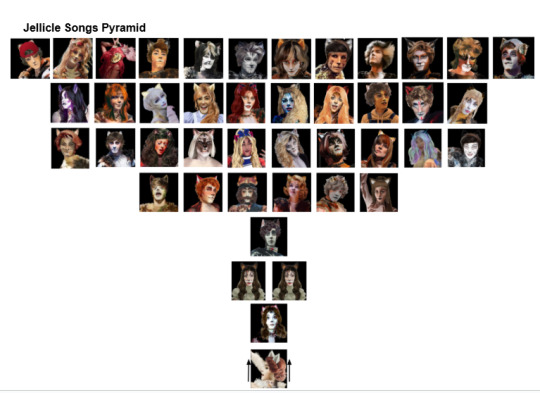
Naming of Cats is much of the same, but the White Cat Solo is Victoria seeing her reflection in a shard of broken mirror and getting terrified by her new form. she ends the piece curled up crying before Misto comes to comfort her.
the next kinda plot difference (unless you count line distribution, but I'm not bothered to do a breakdown of every minor change in line distribution lol) is in Gumbie Cat - the mice are little weremice played by kids aged around, like, 10-13 or so that Jenny takes care of from time to time.
during Tugger there's a few specific blocking ideas I have - my favourites are Olivia singing the terrible bore line, because unlike her peers, she's too cool to fangirl over Tugger (and she definitely doesn't take secret selfies with him - don't go through her camera roll), after dropping Bomba on "I only like what I find for myself... no!" Misto coaxes Tugger over and they do a little dip in the music beats after "larder shelf". Tugger then kinda has to shake himself back into his stage persona on "doesn't care for a cuddle" only to get drawn back in by Misto on "I'll leap on your lap in the middle of your sewing". my boy is down BAD. also, at the end of the song, Misto acts as, like, a bouncer, and when Etcetera gets hyper and won't shut up, Tugger kinda gives Misto a look, and Misto sparks Cetty with magic, making her straight up freeze in place.
there's definitely mother-son tension between Munk, Tugger and Griz. Alonzo, being one of the last take-ins before Griz got exhiled, and the person who really helped Munkus deal with the trauma of having the memories of Griz turning him resurface, pulls Munk away from Griz after she tries to guilt him. while Lonzo is comforting Munk, Demeter steps in to taunt Griz.
Bustopher Jones is largely the same - though I'd have Bustopher and Deut as double-up roles, cause imo they're more vocally compatible than Bustopher and Gus (also I believe they were written to be the same track anyways?). also, Bustopher, being a socialite and owning a bunch of clubs, he only ever makes a small appearance each year. he's Jenny's kind of, like, celeb crush, which Skimble (her husband, I don't think I mentioned before, but they're married - Silly's their bio daughter, and they adopted Mungo and Rumple, but I'll get into that in a bit) fully endorses, he thinks it's cute when Jenny gets flustered by Bustopher hehe.
Mungo and Rumple time, let's goooo!!!! so! my concept for them is they're twins who got turned in maybe the 90s or so, and were in the foster system for years, being passed from family to family, and the longer they spent in the system, the more they acted up, and the stories they talk about in their number is largely the things they got kicked out of homes for. during the Sunday dinner verse, they're at the back of the stage, and the two oldest mice kids portray younger versions of them (in human form) and the swings/booth singers would play the family, cook and social worker - on "then the family'll say, it's that horrible cat", the foster parents turn to young Mungo and Rumple, on "was it Mungojerrie, or Rumpleteazer", they get given their bags on their names, and on "and most of the time, they leave it at that" the social worker takes them while current-day Mungo and Rumple look on, upset, before shaking it off to pretend everything's fine. young Mungo and Rumple stay on, maybe doing the same/similar chorey to their current-day counterparts as they're taken from family to family, and on the line about the ming, young Mungo and Rumple scamper off, scared of the consequences, while current M+R look at eachother panicked. they then blame eachother on the "IT WAS MUNGOJERRIE! AND RUMPLETEAZER!" (so they'd swap lines there), then roughhouse/tussle, before going into play-fighting, then into their secret handshake and then the duo cartwheel. Jenny and Skimble are the first to enter in the play-off, since they took them in after realising the system was failing them again and again.
Old Deut's song is same-same... so's the Song of the Jellicles... only main difference in Jellicle Ball is the Pas du Deux being between Tugger and Misto - Tugger's checking himself out/neatening himself up after the first section of the ball, and Misto does that thing where he taps him on the shoulder and sneaks over to his other side before they start dancing together. in the background, the others are napping or quietly socialising, mayhaps a few other couples are snuggling - Deme and Munk are snuggling, and Munk sees Lonzo preening, Deme smiles and tells him to go to his boyfriend, before heading to Bomba to snuggle with her. then the rest of the ball is basically same-same again.
I was tempted to put Memory part 1 in the intermission, since when I was in Cats Abridged, it was cut entirely (same as Moments of Happiness) and I felt Jellicle Ball was a far cleaner Act 1 closer, but seeing the show in Sydney last month, I realised that the Memory (or, as it's referred to in the programme, Grizabella the Glamour Cat) closer works well, so everyone clears out, but Deut stays back, hiding in the set to listen in.
Moments of Happiness would be acoustic in intermission. just Deut on stage accompanied by a single piano, maybe one or two strings. (also it'd just be the song itself, the intro instrumental will be reutilized at the top of Act 2!)
at the top of Act 2, Victoria gets her "true White Cat Solo", before Jemima comes in with Moonlight.
Gus's song is pretty same-same too - I'd love to have an actor of age as Gus, honestly. they'd only need to be on for Gus, Pekes and Pollicles and the bows. Jellylorum is Gus's hospice nurse, and wheels him on in a chair (he's an ambulatory user).
for those who aren't aware - Pekes and Pollicles has officially taken the place of Growltiger (like, I borrowed the perusal script, and Pekes and Pollicles is after Gus in it). I really like the idea of after Gus says "I once played The Rumpus Cat..." Old Deut wheels over a box of Gus's old costumes from the production he was in when he says "so do it again, come do it again", and Gus organises the kittens into the costumes to play the Pekes, Pollicles, Pugs and Poms.
Skimble's number is also much in the same - maybe they pull an old coaster cart out of the set for the train?
Macavity is where it gets interesting!!! so! Old Deut gets kidnapped, everyone scatters, and Deme starts the number. now she has a very negative history with Macavity. he turned both her and Bomba around the same time, but Bomba was able to escape earlier than Deme, since she fell into a toxic/abusive relationship with Mac. when she fell pregnant with Jemima, it... was not by her own volition, but it was the kick she needed to escape. Bomba helped her out and to the Jellicles. she was potentially already dating Bomba, but her relationship with her and her relationship with Munkus really bloomed while she was carrying Jemima. Munk became Jemima's adoptive father, and the only father she knows, and Demeter is deathly overprotective of her.
anyways, back to the show - so Deme starts the song (I have very specific blocking ideas! - in the music after her verse and before the first chorus, she's self-soothing, patting herself down, etc, and on "he's broken *every* human law" her arms slide into a self-hug, and on the "breaks" of "he breaks the law of gravity", she tugs at her shirt). Bomba comes in to help soothe her girlfriend. Griddlebone, being an agent of Macavity, takes the line "he's outwardly respectable" and then also the "I might mention Mungojerrie" line, to which, Jenny overhears her talking shit about her boy, and delivers the "I might mention Griddlebone".
during the Macavity fight, Mac tries to kidnap Deme, but ends up getting the henchcats to kidnap Jemima while Deme and Munk are distracted.
I really wanna do the version of Mr Mistoffelees that was in the Broadway revival (cause I think that version of the Deut rescue is way cooler)... either way, on the first "...this phenomenal cat produced 7 kittens right out of a hat" Misto brings Jemima back.
okay, Memory is Memory, not much to change up there BUT JOURNEY TO THE HEAVISIDE LAYER?!? OOH BOY I AM EXCITED TO SHARE MY CONCEPT, I LOVE IT SO MUCH FRFR
so! Griz gets accepted by everyone again, and during the instrumental, they've circled her and turn in to sacrificially... unalive... her - they turn back to the audience on "the mystical divinity..." with blood on their hands and faces. on "vivat" her body (a dummy) gets lifted by Peter, Jono, Quaxo and James, who then carry her out through the audience.
yippee, finale and bows and everyone can go home!!! I really want to, like, draw the audience in, make them feel safe with the Jellicles, only to have the uncomfortable cult-like sacrifice of Grizabella at the very end - a sacrifice that they've been told the whole Jellicle Ball is leading up to, not that they'd know the implications of.
anyway... I really love my horror-esque, lore heavy spoopy silly Cats... I would literally give anything to be able to get it to happen for real...
next time I post about it, it'll be more on the individual lore/relationships of each of the cast, as well as costuming, since they can kinda go more hand-in-hand!!!
#cats the musical#cats fan on main#cats musical#cats non replica#jellicle cats#werecats#tuggoffelees#alonzstrap#demestrap#demelurina#skimbledots#jellicle choice? more like jellicle sacrifice#jellicle ball#good gods this is long#my apolocheese
24 notes
·
View notes
Text
In your standard city-builder, survival settlement, and 4x since the start of the genre the way things work is work is that you build shit, you assign people to work at it, and then you distribute the output. It's a little joke that even the most ostensibly capitalist city-builder actually functions on communism. One thing that I notice is that the more libertarian-minded Davos-brained devs can seem the most wedded to it.
And it sort of make sense, you are organizing production, you are assigning workers, sure it's a "city-builder" but what you are actually doing is making a factory. And the workers or even the managers at the factory don't get to just take the cars home after they finish making it, why that's totally absurd. (For more on this consult the works of Mr Marx.)
Simcity doesn't work this way of course, partially because it almost doesn't seem to believe commodities exist. But I have played one city-builder that tried to think of another way of doing this, Children of the Nile. (recommended by Brett Devearux(tm). demo currently available on Steam) It had this concept I'm going to call Appropriation-First city building.
You build your farmhouses, and they cultivate the farmland and grow food. The food they keep some of and send the rest to you. They eat the food they grow and also use it to buy pottery and furniture, you don't pay those goods-makers. You can only manage so many farms yourself, so you let nobles build townhouses you can build more that the nobles manage. Of course those farmers kick their food up to the nobles, who you then have to tax. All the food you get goes to pay state employees, like brick makers, pyramid-builders, priests, scribes to assess tax from pesky nobles, and the rest who you manage more directly, although they have to use that to pay for goods as well as eat. All of this separates the resources you have from the resources the city has. Productivity is separated from appropriation.
The game isn't perfect by a long shot, and how much this appropriation scheme actually matters can vary, but whenever I play a banished-alike or something I really miss that gameplay. Whenever the food just goes straight into my stockpile from the farm and I gotta send it back to them I sort of resent it.
26 notes
·
View notes
Text
Driver's Ranked by Year
Ok, this is going to be a long one because I don't want to spam, so everybody buckle up
Disclaimer: This is not my personal ranking of the ships, this is purely based on how I view the historical event that takes place in the year that the numbers make up. I will happily further explain any of the events, my analysis of the events with the ship, and why I ranked them that way if anybody is interested. I tried to get a variety, but I am better with western history so there is more of skew towards western history. I have used both CE and BCE years to create more variety. As with everything with RPF, I do not believe any of these drivers are together and this is all in good fun, if you don't want to view it as ships view them as teammates! All images are pulled from google.
okie dokie here we go, Hope you enjoy!!
*means that it is in the area of that time period and do not have exact date or may occur over multiple years
1. Maxiel - 31 BCE

Jesus was crucified in 31 BCE
2. Simi - 75 BCE

Julius Caesar was kidnapped by pirates and demanded a higher ransom in order to be saved
3. Lestappen - 1633 CE

Galileo was convicted of Heresy for saying the earth goes around the sun
4. Brocedes - 644 CE

Zenkoji temple is built by Empress Kogyoku
5. Zhou + Mick - *4724 BCE
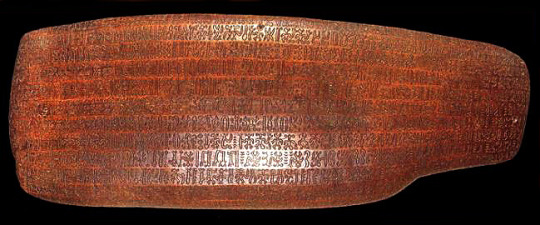
Earliest form of photo-writing in history
6. Yukierre - ~2210 BCE

Hale Bopp comet is seen and won't be seen again until 1997 CE, about 4,000 years later
7. Landoscar - ~814 BCE
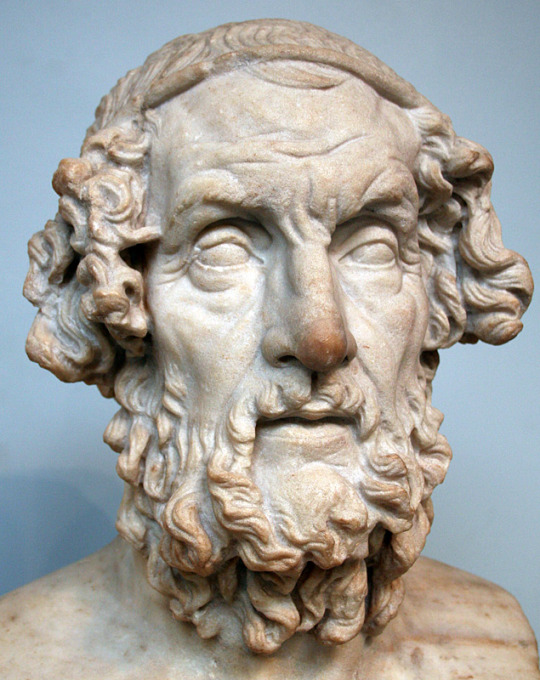
Homer was born
8. Fernando + Esteban - 1431 CE

Joan of Arc is burned at the stake
9. Zhou + Valtteri - ~7724 BCE

Tollmann's hypothetical bolide which led to global cataclysm, i.e. the great flood
10. Loscar - ~812 BCE

Olmecs began to build their pyramids, earliest pyramids from mesoamerica
11. Lewis + Charles - 1644 CE

one of eight years to contain each roman numeral once- MDCLXIV
12. Oscar + Zhou - ~2481 BCE
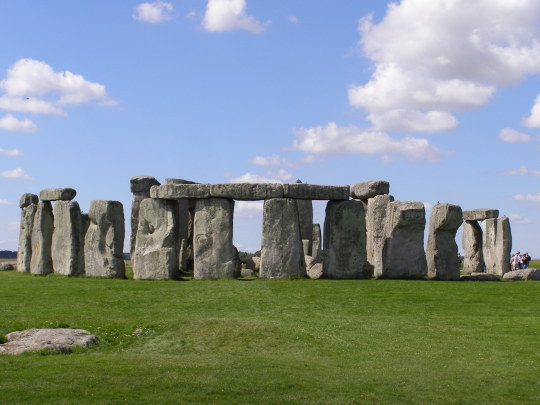
Construction of Stonehenge
13. Esteban + Pierre - ~3110 BCE

Narmer reigns and unifies Egypt for the first time
14. Carlos + Max - 551 BCE

Confucius was born
15. Sewis - 544 BCE

Sun Tzu, author of The Art of War, was born
16. Esteban + Lance - 1831 CE

Victor Hugo publishes the Hunchback of Notre Dame in Paris
17. George + Lewis - ~6344 BCE

Great Britain and Ireland separated from the main land and became Islands
18. Oscar + Max - 181 CE

Lake Taupo Volcano erupts in New Zealand and is seen in both China and Rome
19. Max + Lewis - 441 BCE

Sophocles writes Antigone, one of the first greek tragedies
20. Lewis + Valtteri - ~7744 BCE

Agriculture starts to develop in the Americas
21. Fernando + Lance - 1814 CE

The Great Stock exchange fraud is exposed in London
22. Logan + Alex - 232 BCE
Gaius Flaminius distributes land to Plebians after the Punic Wars in the North
23. Lando + Daniel - 43 CE
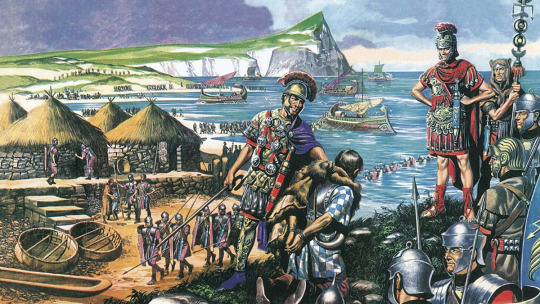
Roman conquest of Britain
24. Lando + Max - 41 BCE
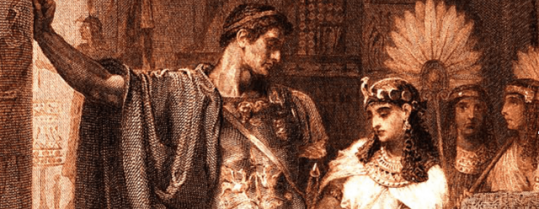
Mark Antony meets Cleopatra VII
25. Charles + Pierre - 1610 CE

Tragedy of Macbeth's first performance
26. Nico + Kevin - ~2027 BCE

The Epic of Gilgamesh is written
27. Galex - ~2363 BCE

Hekla 4 eruption with a VEI 5, explosive eruptions, but nobody was hurt
28. Charles + Lando - 164 BCE

Halley's Comet makes its appearance, occurs once every 75 years
29. Checo + Max - 111 BCE

Spartacus was born
30. George + Lando - 634 CE
The Siege of Damascus
31. Carlando - 455 CE
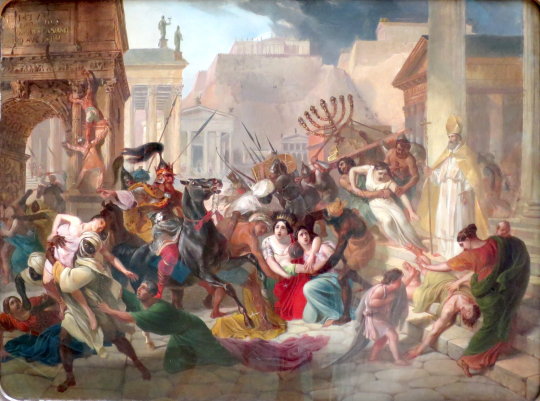
King Generic sacks Rome
32. Charles + Carlos - 1655 CE

Saturn's largest moon, Titan, is discovered
33. Charles + Sebastian - 165 CE
Antonine plague decimated the Roman Empire and China
#f1#formula 1#charles leclerc#max verstappen#lestappen#lando norris#oscar piastri#landoscar#maxiel#daniel ricciardo#kimi raikkonen#sebastian vettel#lewis hamilton#nico rosberg#brocedes#zhou guanyu#mick schumacher#yuki tsunoda#pierre gasly#yukierre#fernando alonso#esteban ocon#valtteri bottas#loscar#carlos sainz#sewis#lance stroll#george russell#alex albon#logan sargeant
60 notes
·
View notes
Quote
ソフトウェア開発における「人名のテクニック」パターン一覧
Claude向け人名+テクニック一覧(t_wadaさんのTDDなど) - くらげになりたい。
@t_wada
なるほど、TDDやテスト駆動開発という言葉は広まりすぎて「意味の希薄化」が発生し、曖昧な理解のまま自動テストやテストファーストと混同され、それがLLMの学習データにも影響したが、人名を与えるとLLMに「具体的な参照点」を与え、より具体的なプログラミングスタイルに限定させる効果があったのか
@t_wada TDDだけでなく「リファクタリング」も意味の希薄化が激しいので、AIに「リファクタリングして」と指示しても効き目がいまいちなことが多々ある。これも人名を出して文脈を境界付けるのが面白そう。「Fowlerの」とか「Kent Beck の Tidyings」とか。
---
## テスト・品質系
- 和田卓人(t_wada)のTDD - 書籍: 「テスト駆動開発」(翻訳) - スライド: History of TDD - ブログ: t-wada.hatenablog.jp
- Kent C. DoddsのTesting Trophy - ブログ: The Testing Trophy and Testing Classifications - 書籍: 「Testing JavaScript」
- Martin FowlerのTest Pyramid - ブログ: The Practical Test Pyramid - 書籍: 「Refactoring」
- Michael FeathersのLegacy Code対処法 - 書籍: 「レガシーコード改善ガイド」 - ブログ: Michael Feathers Blog
- James BachのExploratory Testing - ブログ: Exploratory Testing - Satisfice - 書籍: 「Lessons Learned in Software Testing」
- 秋山浩一のSETI(Software Engineer in Test) - スライド: Software Engineer in Test
- 伊藤直也の負荷試験手法 - ブログ: naoya_ito blog - 書籍: 「Webエンジニアが知っておきたいインフラの基本」
## 設計・アーキテクチャ系
- Eric EvansのDDD(Domain-Driven Design) - 書籍: 「エリック・エヴァンスのドメイン駆動設計」 - サイト: Domain Language
- Robert C. MartinのClean Architecture - 書籍: 「Clean Architecture」 - ブログ: The Clean Code Blog
- Martin FowlerのMicroservices - ブログ: Microservices - 書籍: 「マイクロサービスアーキテクチャ」
- Vaughn VernonのEvent Storming - 書籍: 「実践ドメイン駆動設計」 - サイト: EventStorming
- 増田亨のドメイン駆動設計(日本的DDD実践) - GitHub: business-logic-patterns - スライド: masuda220 - Speaker Deck - 書籍: 「現場で役立つシステム設計の原則」
- 河野通宗のマイクロサービス設計 - ブログ記事やカンファレンス発表
- 成瀬允宣のDDDモデリング手法 - 書籍: 「ドメイン駆動設計入門」 - GitHub: nrslib
## プログラミング手法系
- Kent BeckのTidyings - Substack: Tidy First? - 書籍: 「Tidy First?」
- Robert C. MartinのSOLID原則 - 書籍: 「Clean Code」 - 書籍: 「アジャイルソフトウェア開発の奥義」 - ブログ: The Clean Code Blog
- Martin FowlerのRefactoring - 書籍: 「リファクタリング」(第2版) - サイト: Refactoring.com
- Sandi MetzのRules(4つのルール) - 書籍: 「オブジェクト指向設計実践ガイド」 - ブログ: Sandi Metz Blog
- Gary BernhardtのFunctional Core, Imperative Shell - 講演: Boundaries - スクリーンキャスト: Destroy All Software
- まつもとゆきひろの最小驚きの原則 - 書籍: 「まつもとゆきひろ コードの世界」 - インタビュー・講演記録
- 角谷信太郎のリーダブルコード実践 - 翻訳書籍: 「リーダブルコード」 - スライド: kakutani - Speaker Deck
- 高橋征義のメタプログラミング - 書籍: 「メタプログラミングRuby」(監訳) - 書籍: 「たのしいRuby」(共著)
## プロセス・組織系
- Jeff SutherlandのScrum - 書籍: 「SCRUM」 - サイト: Scrum Inc.
- David J. AndersonのKanban - 書籍: 「カンバン」 - サイト: David J Anderson
- Gene KimのDevOps - 書籍: 「The Phoenix Project」 - 書籍: 「The DevOps ハンドブック」 - サイト: IT Revolution
- Gojko AdzicのSpecification by Example - 書籍: 「実例で学ぶ仕様記述」 - サイト: Gojko Adzic
- 平鍋健児のアジャイル開発 - 書籍: 「アジャイル開発とスクラム」(共著) - ブログ: Kenji Hiranabe - Agile Alliance
- 市谷聡啓の仮説検証型開発 - 書籍: 「カイゼン・ジャーニー」 - 書籍: 「正しいものを正しくつくる」 - スライド: papanda - Speaker Deck
- 及川卓也のプロダクトマネジメント - 書籍: 「ソフトウェア・ファースト」 - note: takoratta - note
- 前田ヒロのSaaS経営指標 - ブログ: Hiro Maeda - ALL STAR SAAS FUND
## インフラ・運用系
- 宮川達彦のCPAN文化 - ブログ: bulknews - CPAN関連の発表資料
- matsumotoryのmruby活用法 - GitHub: matsumotory - 論文・発表資料
- tagomorisのFluentd設計思想 - ブログ: tagomoris.hatenablog.com - GitHub: tagomoris
## パフォーマンス・スケーラビリティ系
- Brendan GreggのUSE Method - サイト: USE Method - 書籍: 「詳解 システム・パフォーマンス」
- Caitie McCaffreyのSagas Pattern - 講演: Distributed Sagas: A Protocol for Coordinating Microservices - 論文・発表資料
- Leslie LamportのPaxos - 論文: 「The Part-Time Parliament」 - サイト: Leslie Lamport
## Web開発系
- 小飼弾のPerl文化 - ブログ: 404 Blog Not Found - 書籍: 「小飼弾のアルファギーク」
- 和田裕介(yusukebe)のWebフレームワーク設計 - GitHub: Hono - ブログ: Yusuke Wada
- mizchiのフロントエンド設計パターン - ブログ: mizchi.dev - Zenn: mizchi - Zenn
## セキュリティ系
- 徳丸浩のWebセキュリティ対策 - 書籍: 「体系的に学ぶ 安全なWebアプリケーションの作り方」(第2版) - ブログ: 徳丸浩の日記
- はせがわようすけのXSS対策 - スライド: hasegawayosuke - Speaker Deck - ブログ・発表資料
## 機械学習・AI系
- 松尾豊の深層学習 - 書籍: 「人工知能は人間を超えるか」 - 東京大学講義資料
- 岡野原大輔のPreferred Networks手法 - 論文・技術ブログ: Preferred Networks Tech Blog - カンファレンス発表
---
プロンプト,ドキュメント,GEMINI.md,CLAUDE.md,指示,
8 notes
·
View notes
Text
The Illusion of Freedom
In today’s world, the illusion of democracy and free will is carefully maintained, but the truth is far from what we are led to believe. Power is not evenly distributed—it is hoarded by a select few who dictate the course of history while the majority remain unaware.
The 1%: The Masters of Control
At the very top of the pyramid sit the true rulers of the world—the 1%. These individuals are not merely wealthy; they are the architects of the global system. They own the central banks, control multinational corporations, manipulate governments, and influence the flow of information. Their wealth isn't just measured in money but in the power to shape ideologies, economies, and even conflicts.
They ensure their position remains unchallenged by controlling what people see, hear, and believe. Mainstream media, education systems, entertainment these are not neutral institutions but tools of control, designed to maintain a society that serves their interests.
The 4%: The Puppets of the Elite
Below the 1% are the 4%—the politicians, CEOs, media moguls, and so-called "leaders" who act as their enforcers. These individuals may seem powerful to the average person, but they are mere puppets, serving the agenda of their masters. They are rewarded with wealth and status in exchange for their loyalty, ensuring that the system remains intact.
These are the people who push narratives, sign treaties, start wars, and implement policies that benefit the elite while harming the general public. They give speeches about democracy and freedom while behind closed doors, they conspire to restrict liberties and consolidate power.
The 90%: The Asleep Majority
The vast majority—90%—live in a state of ignorance, not necessarily by choice, but by design. From birth, they are conditioned to accept the system as it is, to believe that they are free while unknowingly being part of a controlled society. Their energy is spent working for wages that barely cover the cost of living, consuming media that numbs critical thinking, and engaging in distractions that keep them too busy to question anything.
This group includes hardworking people who simply want to live their lives, but because they are unaware of the true structure of power, they unknowingly participate in maintaining it. The system depends on their compliance and indifference.
The 5%: The Awake and Aware
Then there are the 5%—those who see through the deception and understand the true nature of power. These individuals do not blindly trust the media, do not fall for political theatre, and refuse to be manipulated by fear. They are the thinkers, the dissenters, the whistleblowers, the independent journalists, and the free thinkers who challenge the status quo.
The 1% fear this group because if they succeed in waking up the 90%, the entire system collapses. This is why censorship is rampant, dissenting voices are silenced, and those who question too much are labeled as "conspiracy theorists" or extremists. The elite know that ideas are dangerous—once the illusion is broken, it cannot be restored.
The Battle for Truth
The struggle is not between political parties or nations—it is between control and freedom, between ignorance and awareness. Those in power do not care about left or right, liberal or conservative; they care only about maintaining their control. Divide and rule is their strategy, keeping the 90% fighting among themselves instead of uniting against their real oppressors.
The question is: Will the 5% succeed in waking up the masses before it's too late? Or will the 1% tighten their grip and usher in a future where true freedom is nothing more than a memory?
The choice is ours. Wake up. Speak out. Resist.
#PowerStructure#GlobalControl#WakeUp#The1Percent#EliteManipulation#MediaControl#PoliticalPuppets#MassDeception#FreeThinkers#TruthSeekers#HiddenAgendas#SystemCorruption#DivideAndConquer#DeepState#Censorship#FinancialControl#GovernmentManipulation#NewWorldOrder#AwakenTheMasses#FreedomVsControl#today on tumblr#new blog#deep thoughts#deep thinking
13 notes
·
View notes
Text
Interesting Papers for Week 4, 2025
EEG microstate transition cost correlates with task demands. Barzon, G., Ambrosini, E., Vallesi, A., & Suweis, S. (2024). PLOS Computational Biology, 20(10), e1012521.
Compression-based inference of network motif sets. Bénichou, A., Masson, J.-B., & Vestergaard, C. L. (2024). PLOS Computational Biology, 20(10), e1012460.
A cortical field theory – dynamics and symmetries. Cooray, G. K., Cooray, V., & Friston, K. (2024). Journal of Computational Neuroscience, 52(4), 267–284.
De novo sensorimotor learning through reuse of movement components. Gabriel, G., Mushtaq, F., & Morehead, J. R. (2024). PLOS Computational Biology, 20(10), e1012492.
Pupil-Linked Arousal Modulates Precision of Stimulus Representation in Cortex. Geurts, L. S., Ling, S., & Jehee, J. F. M. (2024). Journal of Neuroscience, 44(42), e1522232024.
Single-neuron representations of odours in the human brain. Kehl, M. S., Mackay, S., Ohla, K., Schneider, M., Borger, V., Surges, R., … Mormann, F. (2024). Nature, 634(8034), 626–634.
Properties of layer V pyramidal neurons in the primary motor cortex that represent acquired motor skills. Kida, H., Toyoshima, S., Kawakami, R., Sakimoto, Y., & Mitsushima, D. (2024). Neuroscience, 559, 54–63.
Dopamine release plateau and outcome signals in dorsal striatum contrast with classic reinforcement learning formulations. Kim, M. J., Gibson, D. J., Hu, D., Yoshida, T., Hueske, E., Matsushima, A., … Graybiel, A. M. (2024). Nature Communications, 15, 8856.
Impact of background input on memory consolidation. Lamberti, M., Kikirikis, N., Putten, M. J. A. M. van, & Feber, J. le. (2024). Scientific Reports, 14, 23681.
Attentional guidance through object associations in visual cortex. Lerebourg, M., de Lange, F. P., & Peelen, M. V. (2024). Science Advances, 10(41).
Mnemonically modulated perceptual processing to represent allocentric space in macaque inferotemporal cortex. Li, A., Chen, H., & Naya, Y. (2024). Progress in Neurobiology, 241, 102670.
Physically stressed bees expect less reward in an active choice judgement bias test. Procenko, O., Read, J. C. A., & Nityananda, V. (2024). Proceedings of the Royal Society B: Biological Sciences, 291(2032).
Tipping the balance between fairness and efficiency through temporoparietal stimulation. Soutschek, A., Șahin, T., & Tobler, P. N. (2024). Proceedings of the National Academy of Sciences, 121(42), e2409395121.
Striatal Serotonin Release Signals Reward Value. Spring, M. G., & Nautiyal, K. M. (2024). Journal of Neuroscience, 44(41), e0602242024.
Conjunctive processing of spatial border and locomotion in retrosplenial cortex during spatial navigation. Sun, H., Cai, R., Li, R., Li, M., Gao, L., & Li, X. (2024). Journal of Physiology, 602(19), 5017–5038.
Directing Attention Shapes Learning in Adults but Not Children. Tandoc, M. C., Nadendla, B., Pham, T., & Finn, A. S. (2024). Psychological Science, 35(10), 1139–1154.
Exploration, Distributed Attention, and Development of Category Learning. Wan, Q., & Sloutsky, V. M. (2024). Psychological Science, 35(10), 1164–1177.
The structure and statistics of language jointly shape cross-frequency neural dynamics during spoken language comprehension. Weissbart, H., & Martin, A. E. (2024). Nature Communications, 15, 8850.
Multisensory working memory capture of attention. Xu, L., Cai, B., Yue, C., & Wang, A. (2024). Attention, Perception, & Psychophysics, 86(7), 2363–2373.
A population code for spatial representation in the zebrafish telencephalon. Yang, C., Mammen, L., Kim, B., Li, M., Robson, D. N., & Li, J. M. (2024). Nature, 634(8033), 397–406.
#neuroscience#science#research#brain science#scientific publications#cognitive science#neurobiology#cognition#psychophysics#neurons#neural computation#neural networks#computational neuroscience
14 notes
·
View notes
Text

“In each of us there is another whom we do not know. He speaks to us in dreams and tells us how differently he sees us from the way we see ourselves.” — Carl Jung
Pyramid of Ascension Talon Abraxas
The pyramids are not only architectural marvels but also repositories of deep mathematical and geometric knowledge that continue to intrigue us. One fascinating aspect is how the ratios of 3/4 and 3/1 appear to be embedded within their design and proportions.
3/4 and the Pyramid's Proportions
When studying the pyramids, particularly the Great Pyramid of Giza, we find that the ratio of 3/4 can be observed in various ways. For instance, if you consider the pyramid's height and the length of the base's side, you might discover that the side length of the base relates to the pyramid's height in a 3/4 ratio. The interesting thing about this ratio is that when you divide 3 by 4, it results in an exact division without decimals, indicating a precise and intentional design. This relationship reflects a harmony that recurs in nature and mathematics, where ratios often represent the balance between different elements.
3/1 and the Pyramid's Angles
Similarly, the 3/1 ratio can be found in the pyramid's angles and the height relative to certain other dimensions. The 3/1 ratio, for example, can be observed in the relationship between the pyramid's total height and the height at which the sloping surface intersects an imagined horizontal line inside the structure. This relationship may also reflect certain geometric principles regarding the distribution of forces and the stability of the structure.
Pi and the Secrets of the Pyramids
Beyond these proportions, it's also noteworthy that the number π (Pi) is often associated with the design of the pyramids. Several researchers and theorists have pointed out that if you divide the pyramid's perimeter by its height, you obtain a number very close to 2π. This suggests that the ancient Egyptians might have understood and utilized this irrational number long before it was formally defined, making the pyramids possible sources for our modern understanding of π.
The Symbolism of Thirds
The exactness and observability of both 3/4 and 3/1 ratios in the pyramids suggest that the ancient Egyptians had a profound understanding of these proportions and their significance. The numbers three and four, as well as their combinations, hold symbolic meaning in many cultures, and their precise divisibility could reflect an awareness of how these relationships function in both practical and spiritual contexts.
Thus, the pyramids are not just masterpieces of engineering but also manifestations of a deep mathematical and geometric understanding. The ratios of 3/4 and 3/1, along with the mysterious number π, are examples of how these ancient monuments can be seen as encoded representations of universal truths, continuing to influence our understanding of mathematics and architecture even today.
25 notes
·
View notes
Text
Archaeoacoustics: The Archaeology of Sound

Archaeoacoustics, a burgeoning field within archaeology, combines the study of ancient sites and artifacts with the science of sound. By examining how sound was used and experienced in historical contexts, researchers can gain unique insights into the lives, cultures, and environments of ancient peoples. This post will delve into the principles of archaeoacoustics, its methodologies, significant findings, and the implications of these discoveries for our understanding of history.
What is Archaeoacoustics?
Archaeoacoustics is the interdisciplinary study that merges archaeology, acoustics, and sometimes anthropology, to understand the role of sound in past human activities. This field investigates how ancient peoples produced, manipulated, and perceived sound, whether in rituals, communication, or daily life. By reconstructing these soundscapes, archaeoacoustics offers a sensory dimension to historical inquiry, enriching our interpretation of archaeological sites and artifacts.
Methodologies in Archaeoacoustics
Acoustic Measurements and Simulations
One of the primary methods in archaeoacoustics involves acoustic measurements and simulations. Researchers use modern technology to analyze the acoustics of ancient structures such as theaters, temples, and caves. Tools like sound level meters, directional microphones, and computer simulations help in understanding how sound behaves in these environments. By measuring reverberation times, frequency responses, and sound distribution, archaeologists can infer the acoustic properties and possible uses of these spaces.
Sound Mapping
Sound mapping is another critical technique, where the distribution of sound within a particular area is documented. This involves creating detailed maps that illustrate how sound travels and is experienced at different locations within a site. These maps can reveal areas of optimal acoustics that may have been used for specific activities, such as speech, music, or ritual practices.
Experimental Archaeology
Experimental archaeology also plays a role in archaeoacoustics. By recreating ancient instruments or sound-producing devices, researchers can explore how these tools might have been used and what kind of sounds they produced. This hands-on approach provides tangible insights into the auditory experiences of ancient peoples.
Significant Discoveries in Archaeoacoustics
The Acoustics of Stonehenge
One of the most fascinating studies in archaeoacoustics involves Stonehenge, the prehistoric monument in England. Researchers have used acoustic modeling to understand how sound would have behaved within this stone circle. Findings suggest that the stones could have amplified speech and musical sounds, creating an immersive auditory experience. This has led to speculation that Stonehenge may have been used for rituals or gatherings where sound played a crucial role.
The Hypogeum of Hal-Saflieni
The Hypogeum of Hal-Saflieni in Malta, an underground temple complex, is another site of interest. Acoustic studies have shown that certain chambers within the Hypogeum have unique resonance frequencies that enhance the human voice. This has led researchers to believe that the temple may have been designed with acoustic properties in mind, possibly for chanting or other vocal rituals.
Chavin de Huantar
At the ancient site of Chavin de Huantar in Peru, archaeoacoustics has revealed that the temple complex was built with sophisticated sound manipulation in mind. Researchers discovered that the architecture of the site, including its network of tunnels and chambers, could have been used to create disorienting and awe-inspiring auditory effects during religious ceremonies. The use of conch shell trumpets and other sound devices would have added to these effects, enhancing the spiritual and psychological impact on participants.
The Maya Pyramid of Kukulkan
At the Maya ceremonial center of Chichen Itza in Mexico, an incredible acoustic phenomenon can be heard at the Pyramid of Kukulkan. If you clap your hands directly in front of the pyramid's main staircase, it echoes back an almost mechanical bird-like chirping sound. Handclaps from different positions along the base of the staircase likewise trigger the echo, but with different musical tones spanning half an octave. Recordings of the hand-clap echoes match the chirp of the nearly extinct Quetzal, the sacred bird associated with both the name of the pyramid and its plumed serpent deity Kukulkan.
The Maya Ruins of Palenque
Archaeologists discovered that the temples and public squares in Palenque, Mexico could clearly project the sounds of a human speaker and musical instruments of the time across at least a hundred meters, or about the length of a football field. The investigation identified rooms that could have been used by musicians, speakers or priests to amplify the frequency, quality and volume of sound, allowing the music or the message to travel further and reach more people. The findings strongly suggest the design and structures at Palenque involved a great deal of knowledge about acoustics and the behavior of sound.
Implications and Insights
Understanding Rituals and Ceremonies
Archaeoacoustics provides valuable insights into the rituals and ceremonies of ancient cultures. By reconstructing the soundscapes of these events, researchers can better understand the sensory experiences of participants and the role of sound in these practices. This can shed light on the spiritual and cultural significance of sound in ancient societies.
Reinterpreting Archaeological Sites
The study of sound can lead to new interpretations of archaeological sites. Structures that were previously thought to serve purely functional purposes may be re-evaluated in light of their acoustic properties. For example, a room that was assumed to be a storage area might be reconsidered as a space for ritual chanting if it has unique acoustic characteristics.
Enhancing Public Engagement
Archaeoacoustics also has the potential to enhance public engagement with archaeology. By recreating the sounds of the past, museums and heritage sites can offer immersive experiences that bring history to life. This sensory approach can make historical sites more accessible and engaging for visitors, fostering a deeper connection with the past.
Conclusion
Archaeoacoustics offers a fascinating and innovative approach to the study of ancient cultures. By exploring the acoustic properties of archaeological sites and artifacts, researchers can uncover new dimensions of historical experience and gain deeper insights into the lives of ancient peoples. Despite its challenges, the field holds great promise for enhancing our understanding of the past and engaging the public with history in new and exciting ways. As technology advances and interdisciplinary collaboration continues, the future of archaeoacoustics looks both promising and intriguing, inviting us to listen to the echoes of history in ever more profound ways.
#consciousness#archaeology#acoustics#ancient cultures#sound waves#anthropology#music#ritual#sacred places
44 notes
·
View notes